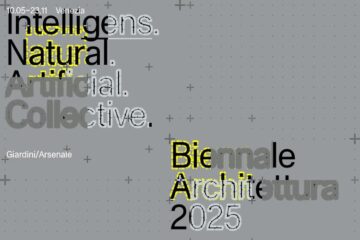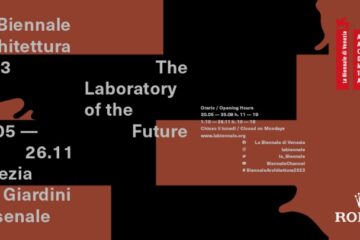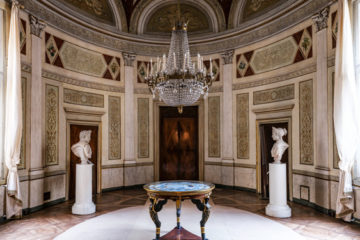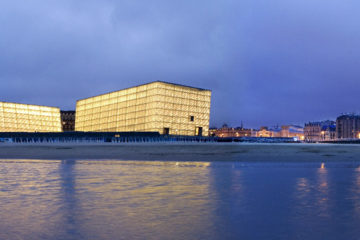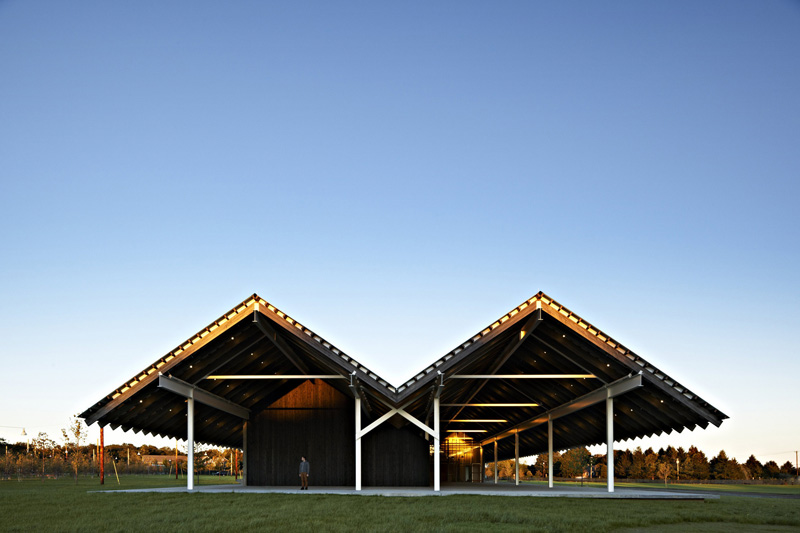
The Swiss architects Herzog & De Meuron started the project for the new Parrish Art Museum from the artist’s studio in the East End of Long Island.
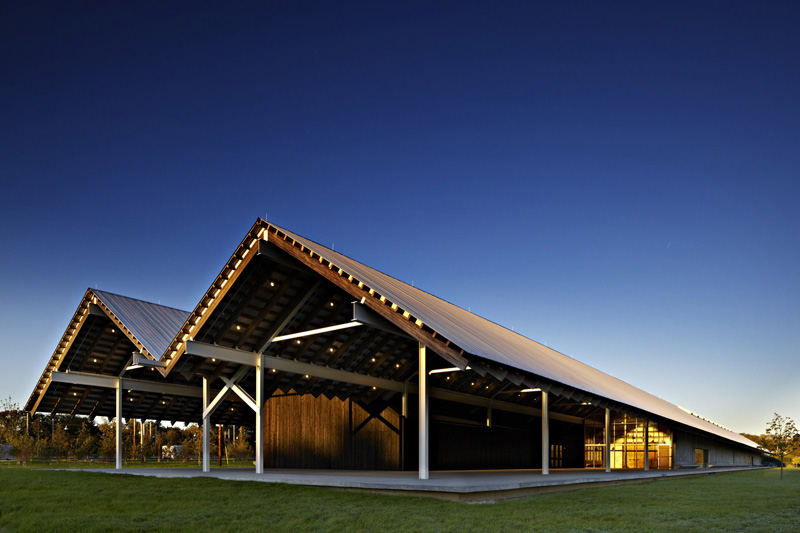
The architects set the basic parameters for a single gallery space by distilling the studio’s proportions and adopting its simple house section with north-facing skylights.
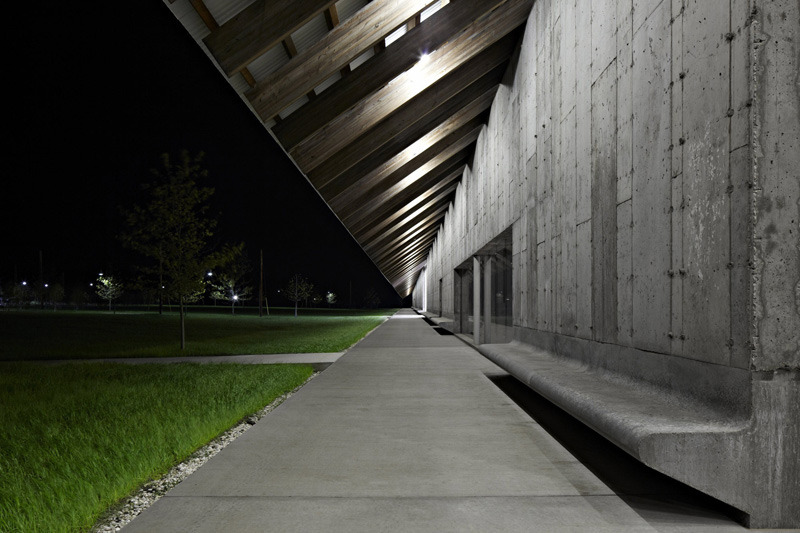
Two of these model galleries form wings around a central circulation spine that is then bracketed by two porches to form the basis of a traightforward building extrusion.
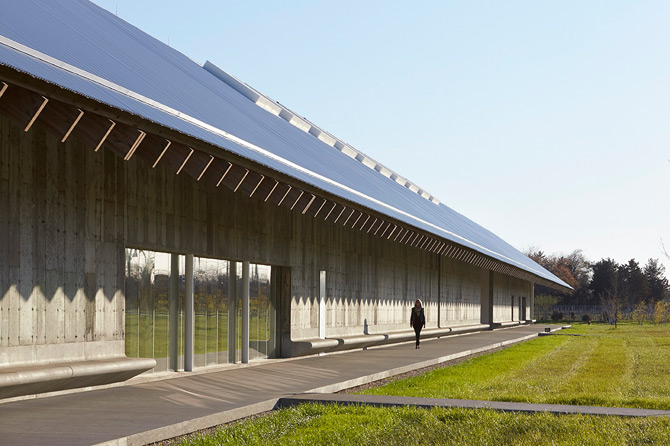
A cluster of ten galleries defines the heart of the museum. The size and proportion of these galleries can be easily adapted by re-arranging partition walls within the given structural grid.
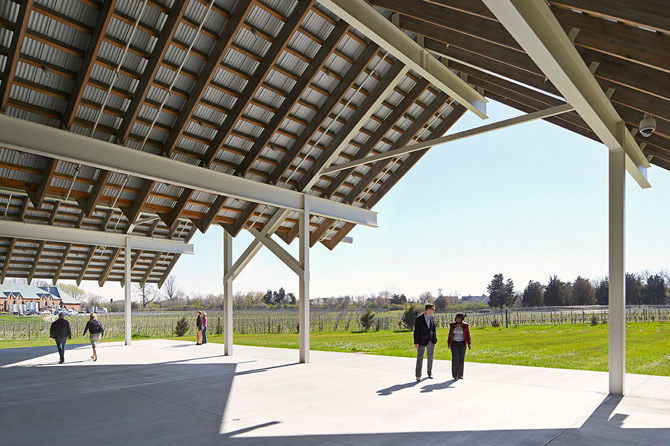
To the east of the gallery core are located the back of house functions of administration, storage, workshops and loading dock. To the west of the galleries are housed the public program areas of the lobby, shop, and café with a flexible multi-purpose and educational space at the far western end.
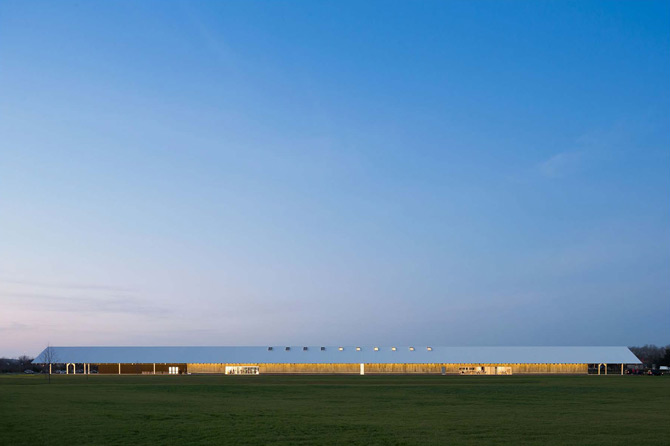
An ordered sequence of post, beam and truss defines the unifying backbone of the building. Its materialisation is a direct expression of readily accessible building materials and local construction methods.
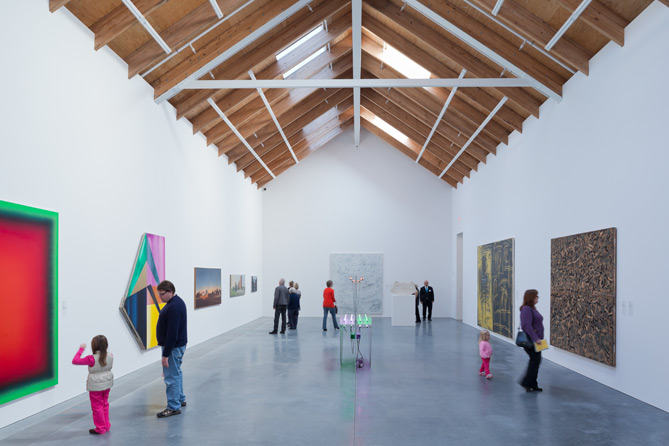
The placement of the building is a direct result of the skylights facing towards the north. This east-west orientation, and its incidental diagonal relationship within the site, generates dramatically changing perspective views of the building and further emphasises the building’s extreme yet simple proportions. It lays in an extensive meadow of indigenous grasses that refers to the natural landscape of Long Island.
Images 1, 2, 3 courtesy of Matthu Placek
Images 4, 5, 6, 7 courtesy of Herzog & De Meuron
Discover: www.herzogdemeuron.com
